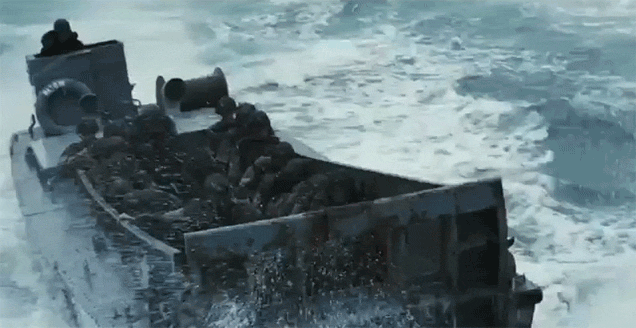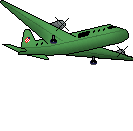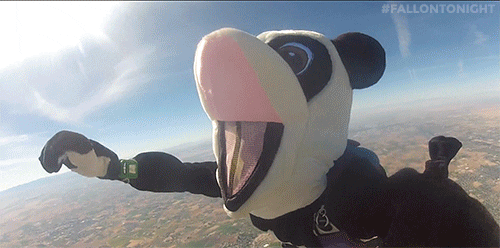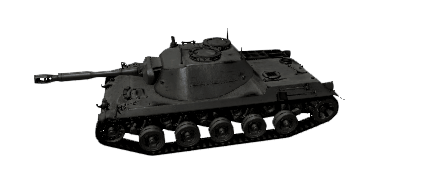
SEOUL, South Korea – The South Korean military grounded dozens of new helicopters after five marines were killed in a crash during a test-flight, officials said Wednesday July 18th 2018. The amphibious MUH-1 helicopter was being test-flown after repairs when it plunged to the landing strip from about 33 feet in the air, then caught fire on Tuesday at a marine base in the southeastern city of Pohang, according to a statement. The marines banned flights for the three choppers in the fleet pending the results of an investigation into the cause of the crash. South Korea’s army also grounded more than 90 KUH-1 Surion helicopters, which was the original model used for the marine variant, amid safety concerns.

Closed-circuit TV footage of the crash released by the marines shows the helicopter’s rotor blades being separated from the fuselage shortly after takeoff, the Yonhap News Agency reported. The five killed were identified Wednesday as a 46-year-old lieutenant colonel who was the pilot; a 37-year-old major who was the co-pilot; a 27-year-old gunnery sergeant who was a technician; and two stewards, including a 22-year-old staff sergeant and a 21-year-old corporal. A 43-year-old master sergeant was hospitalized with injuries, the deceased were posthumously promoted by one rank.

Korea Aerospace Industries, or KAI, developed the MUH-1 or Marineon helicopters, to be deployed with South Korea’s marine corps. Photo courtesy of Republic of Korea Marine Corps/Yonhap - The amphibious choppers are a variant of the KUH-1 Surion light utility helicopters and are designed for land and sea operations. The aircraft also includes extra fuel tanks and tactical air navigation equipment, the report states.
Each chopper can reach a maximum cruising speed of 165 mph and can fly for more than two hours without stopping.
It is also equipped with two 7.62mm machine guns and can carry as many as nine personnel. The new helicopters include a blade-folding system on the main rotor, which reduces the overall dimensions of the chopper and protects the equipment from seawater damage,

South Korean marines, like those above in a 2004 exercise, have a reputation for rigorous training and enduring harsh discipline. CreditChung Sung-Jun/Getty Images - The helicopters, which can be used to transport personnel and equipment, were produced by local defense firm Korea Aerospace Industries and delivered in the first half of this year, according to Yonhap. KAI was quoted as saying it’s willing to cooperate with the investigation if asked and expressed condolences for those killed. The military said a joint investigation team has been formed with 23 members from the marine corps, navy, air force, army and the defense agency for technology and quality. It was the second fatal crash involving South Korean military aircraft in more than three months. An F-15K Slam Eagle crashed into a mountain on April 5, killing the two pilots.

A hospital in Gimpo, South Korea, after a corporal fired on fellow marines. Investigators said the gunman had been bullied. CreditYonhap, via Agence France-Presse — Getty Images - On July 4, 2011 a marine corporal who investigators said was bullied by others in his barracks went on a shooting rampage, killing four marines and wounding a fifth. On July 10th, a marine private hanged himself. Bruises, possibly from an earlier beating, were found on his chest. Four days later, a marine master sergeant killed himself, also by hanging. These episodes, and similar ones in the army, have amplified a problem faced by South Korea’s 650,000-member military, a force intended to deter aggression from North Korea, with which the South never concluded a formal peace after the 1950-53 Korean War. Increasingly, the military’s ranks are filled with young men who have not experienced war and no longer consider their 21-month compulsory service a “sacred duty,” as their fathers did, but rather an inconvenient interruption of their civilian lives and careers.

U.S. Marine Lt. Col. Christopher L. Medlin, right, speaks with unit leaders from the Republic of Korea Marine Corps Oct. 7 at Rodriguez Live Fire Complex during Korean Marine Exchange Program 14-13. KMEP is carried out in the spirit of the Republic of Korea-U.S. Mutual Defense Treaty signed between the two nations October 1, 1953. The exercise underlines the enduring alliance and friendship between the ROK and U.S. and highlights the two countries’ combined commitment to the defense of the ROK and peace and security in the region. The ROK Marines are with 2nd Battalion, 8th Brigade, 2nd ROK Marine Division. Medlin is the commanding officer of 1st Battalion, 3rd Marine Regiment, currently assigned to 4th Marine Regiment, 3rd Marine Division, III Marine Expeditionary Force,
Hundreds of South Korean and US Marines braved subfreezing temperatures as they took part in winter training exercises on Tuesday 19 December 2017. Photos show shirtless soldiers wrestling, doing press-ups and snow sport exercises in the eastern mountainous region of Pyeongchang, some 180 kilometers east of Seoul. More than 220 South Korean Marines and 220 US Marines took part in the drill, which comes less than two months before the Winter Olympic Games set to be held there in February 2018.

Many younger soldiers and marines are now unwilling to accept harsh treatment long tolerated and even encouraged in South Korea as a way of toughening up men for battle, including beatings severe enough to puncture eardrums and cut deeply into thighs. “Some young people, who grew up in freedom, seem psychologically unable to adjust to a different environment in the military,” the president said, commenting on the deaths among the marines. “We have to drastically change the barracks culture.” The Defense Ministry has announced a crackdown on beatings and other abuses in the military.
Amphibious vehicles of the Republic of Korea Marine Corps take part in the landing operation in the sea off Taean, about 170 kms southwest of Seoul. One of the most feared punishments among marines, the one said to have been inflicted on the corporal accused in the July 4 shootings, is to be ostracized. Kim Soong-nyong, the former marine who completed his service in 2008, said the people subjected to such treatment were often believed to be “snitches.” He added, “You’re shunned and talked down to even by your subordinates,” a particularly humiliating experience in South Korea with its strict Confucian hierarchy.

Amphibious vehicles of the Republic of Korea Marine Corps take part in the landing operation in the sea off Taean, about 170 kms southwest of Seoul.




Image Above - Captain Barnes had helped save many lives while working for the Darlington-based Great North Air Ambulance Photo: ROSSPARRY - A pilot who was killed in a central London helicopter crash was under commercial pressure to satisfy an important client when he made the inappropriate and unsafe decision to fly in "excessively challenging weather conditions", a jury has found. Peter Barnes, 50, died when the helicopter he was piloting clipped a crane at The Tower, St George Wharf, Vauxhall, On 16 January 2013. Pedestrian Matthew Wood, 39, from Sutton, Surrey, was also killed as he walked to work, Twelve other people were also injured as a result of the crash. A jury has delivered its conclusions about both deaths before coroner, Dr Andrew Harris. It found both deaths were accidental, however Mr Barnes's decision to fly despite the freezing fog and scattered cloud that morning was "neither safe nor appropriate". Mr Barnes, a pilot of 24 years, had been working for the helicopter company RotorMotion, which is no longer in business.

The helicopter hit a crane before crashing to the ground killing the pilot and a pedestrian ( Getty ) He had been flying from Redhill Aerodrome in Surrey to Elstree in Hertfordshire but was diverted to Battersea heliport. The jury accepted evidence from Air Accidents Investigation Branch (AAIB) inspector Geraint Herbert, who believed Mr Barnes suffered a "loss of situational awareness" due to poor visibility, causing his accident. The jury noted that the pilot's decision to take off from Redhill was technically "safe" as the weather there had cleared, but inappropriate. Jurors concluded: "He could not have reasonably expected to have completed his planned flight while maintaining adequate visibility. Therefore, he should not have attempted the flight." The jury found Mr Barnes's decision to divert to Battersea, after receiving a text message from a client, was also unsafe and inappropriate. Jurors concluded: "Mr Barnes was likely to have felt under pressure to land at Battersea."

They added: "The 7.55am text message he received from a client prompted his decision to divert, and was likely to have been read as the landing preference of a significant client, regardless of intention. "The general commercial pressure within a small company to keep such a client happy may have been exacerbated by that client's disagreement with another pilot there a fortnight earlier and an investigation into a third pilot." The jury found that Mr Barnes should have aborted the Battersea landing. But it said there could be no certainty about whether Mr Barnes became distracted immediately before he crashed. "Timing suggests he may have been changing the frequency on his radio," the jury concluded. "However Mr Barnes was a highly experienced pilot unlikely to become distracted by communication, ahead of aviation and navigation."

Cars and two buildings caught fire after the burning wreckage fell into Wandsworth Road in South Lambeth. Eighty firefighters tackled the blaze. Metropolitan Police Commander Neil Basu told BBC News it was "miraculous" the crash was not much worse. It is thought some of the injured were hit by falling debris. Five people were taken to hospital with minor injuries. Seven people were treated at the scene. Part of the crane was left hanging from the side of the residential building, which is still under construction. London Fire Brigade said part of the tail section of the helicopter landed on roof of the building and the main section landed in Wandsworth Road, hitting two cars. The fire from the helicopter ignited two buildings. The craft was an Augusta 109, a lightweight, twin-engine helicopter,
Sheer carnage and mass panic spread like wild fire as the helicopter crashed down onto the streets below almost producing a Zombie movie in the making. Thick plumes of smoke fill the smoggy air as the London police ambulance and fire services race to the scene. The Civil Aviation Authority said a warning about the crane involved in the crash had been issued to pilots in October and again on 7 January. But it confirmed that red aviation warning lights on tall structures only need to be turned on at night - and not during bad weather in daylight hours - because they are not visible in fog or low cloud. The rules mean the period defined as night would have ended about 30 minutes before the crash.

Mr Barnes is understood to have piloted helicopters in action scenes for films Die Another Day, Tomb Raider II and Saving Private Ryan. According to his LinkedIn profile he had also operated flights for the BBC and ITN during the Athens and London Olympics. A neighbour of Mr Barnes, who lived in Goddard's Green near Mortimer, said the pilot had lived in the village with his partner and their two children for about five years. David Sinclair, 66, said: "We saw the helicopter come and go every now and again, as he had a helipad in the garden and parked it there." Capt Philip Amadeus, managing director at Rotormotion, said Mr Barnes was a highly qualified commercial pilot with more than 12,000 flying hours. He had worked for the firm for more than 15 years. Mr Amadeus said: "We are devastated by the loss of a highly valued colleague and very dear friend. Our thoughts and condolences are with Peter's wife and children. "His death is a very great loss to the aviation community and Rotormotion."
Low visibility: Pictured the morning of the accident after 8.00 am, On 16 January 2013, the wreckage of a crane at the construction site of The Tower St George Wharf which was hit by a helicopter in London, killing two people and injuring a dozen more

Image Above - Scene from the movie - Saving Private Ryan - The incident caused gridlock with all approaches to the Vauxhall Cross one way system closed at the height of the rush hour and Vauxhall Tube station and railway station closed. London Fire Brigade said more than 50 other firefighters were at St George's Wharf to secure the damaged crane.Fire brigade station manager Bruce Grain said crews arrived at the scene in four minutes. He said the helicopter fell into Wandsworth Road, hitting various vehicles and bursting into flames and there were also fires in nearby buildings. A man was rescued from a burning car by firefighters.

Wandsworth Road was blocked by the burning wreckage and aviation fuel and the side of a building also caught fire. A motorcycle was lying on its side in the road where it was abandoned. Witness Michael Krumstets said: "I was on my way to work this morning with my flatmate when the helicopter crashed right next to us. "We saw the helicopter clip the crane and heard a loud crack, it started spinning out of control and directly towards us. It took just seconds for this to happen. "We ran as it fell towards us. We got away just in time. "We were just feet away when it hit the ground and exploded."
Mark Osbourne, from a bike shop near the scene, said he ran to try to help the injured. "There was lots of wreckage and fire," he said. "I saw a woman on a motorcycle that must have missed the carnage by six feet. "It felt like a war movie, it was surreal." Craig Dunne, who was walking to work at the time of the accident, said: "When I got to the end of the road there was a massive explosion and the crane is obviously in pieces. "And I looked to the left-hand side and there were cars - three cars on fire - people screaming, shouting and hollering, and the next thing I know there are police, ambulances and everything everywhere and people going crazy. It's madness - absolute madness."



Image Above - Scene from Die Another Day -Mark Correll was cycling along Wandsworth Road when debris from the crash started falling around him. "I heard a massive explosion and looked up to see debris falling everywhere from the sky," he said. "I didn't hang around as there was massive debris falling intermittently and if anything had hit me I would have been killed. "My first instinct was to dodge the debris - I thought the building was going to collapse. "It was easily the most frightening thing I have ever witnessed." While visiting the scene, London mayor at the time Boris Johnson said questions would be asked about how the accident happened. He also said the crane was now secure and would be dealt with soon.

Image Above - Pedestrian Matthew Wood 39 also died when the helicopter crashed down, sister of victim Matthew Wood reveals thieves burgled her home as she mourned his death with several items of Jewellery taken, The Civil Aviation Authority said there were 16,374 helicopter flights over London in 2012. It said single-engine craft were required to fly along certain routes, selected to provide safety, and while twin-engine helicopters could operate in wider areas, all were subject to air traffic control clearance. It said pilots were notified of very tall structures for flight planning purposes, as was the case with the crane involved in the crash. The Met told the BBC there was no suggestion the incident was linked to terrorism.

With over 1.5 million fleet flight hours and an average availability above 92%, the S-92® helicopter is the industry’s standard for safety and reliability. The S-92 helicopter performs a variety of missions, including offshore oil transportation, search and rescue, Head of State and airline missions
Twelve nations have selected the S-92 helicopter for their critical Head of State missions. In May 2014, Sikorsky was honored to win the U.S. Navy Contract to Replace ‘Marine One’ Helicopter Fleet and the vote of confidence in the S-92 as a proven and trusted platform. The world’s most advanced executive transport helicopter will be built off of our commercial platform.
Cougar Helicopters Flight 91 also known as Flight 491 was a scheduled flight of a Cougar Sikorsky S-92A (Registration) C-GZCH which ditched on 12th March 2009 en route to the SeaRose FPSO in the White Rose oil field and Hibernia Platform in the Hibernia oilfield off the coast of Newfoundland 55 Kilometres (34 mi) east-southwest of St.John's Newfoundland, Of the eighteen on board only one survived. The 2006-built craft with manufacturers' serial number 920048, was a 19-passenger helicopter powered by twin General Electric CT7 turboshaft engines. It has been registered C-GZCH to Cougar International Inc. since 12 April 2007. The main gearbox, which was reported as having lost oil pressure, couples both engines to the main and tail rotors, and also drives the hydraulic pumps and two electrical generators.

The Sea Rose FPSO on the water. The White Rose field is located 350km east of Newfoundland, approximately 50km from both the Terra Nova and Hibernia fields. It is operated by Husky Energy(68.875%) on behalf of Petro-Canada (26.125%) while the Government of Newfoundland and Labrador, through the province’s energy corporation, holds an equity stake of 5%. Total capital costs were about $2.35bn.
The first three wells – N-22, J-49 and L-61 – were drilled between 1984 and 1986. White Rose E-09 well was drilled in 1987-1988 into the South Avalon oil pool and encountered over 90m of net oil pay. In 1999 and 2000, three additional delineation wells were drilled into the South Avalon, White Rose L-08, A-17 and H-20. A fourth well, N-30, was also drilled in 1999 into the North Avalon pool, downdip from the N-22 well.
First oil from the core field was achieved in November 2005. In 2007, production was about 42.8 million barrels, and production in August 2008 – which also marked the field’s 100-million barrel milestone – was quoted by Husky as 120,000 bpd. The life of the field is estimated at 12-15 years.

Flowers and messages adorn the chain link fence near the Cougar Helicopter terminal at St. John's International Airport Monday , as tributes to the victims of Cougar Flight 491, which crashed killing 17 people March 12, 2009. - Joe Gibbons - Cougar 91 is a regular 90-minute, 315 km shuttle flight from St. John's International airport, usually servicing the SeaRose FPSO, The flight was carrying workers to SeaRose and the Hibernia platform. The flight was under the command of Matthew Davis, with Tim Lanouette as first officer. A Mayday call was issued after the aircraft reported zero oil pressure in the main gearbox at 9:40 a.m. NDT (12:10 UTC). Flight 91 attempted to return to St. John's but went down at 9:48 a.m. The aircraft was spotted, floating upside down, by a Provincial Airlines ice patrol airplane 25 minutes later. It later sank in 178 metres (584 ft) of water. Only one of the eighteen people aboard survived the sinking, although another managed to exit the aircraft.

Flowers decorate a chain linked fence as Cougar Helicopter employees prepare the chopper on Thursday March 11, 2010 in St.John's, N.L.. Friday will mark the first anniversary of the Cougar Flight 491 crash off the coast of Newfoundland.
The field has been developed from three or four drill centres on the seafloor, with production and water and gas injection wells located at each centre. These drill centres are located in excavated glory holes that lie below the seabed to protect the wells from iceberg scour.
Ongoing development plans envisage up to 10 to 14 production wells eventually. An additional eight to eleven gas and water injection wells have been drilled for resource conservation and to maintain reservoir pressure. The wells have been drilled in phases to bring White Rose satellite fields into production in late 2009 or early 2010.
The drill centres are connected to a ship-shaped floating production, storage and offloading (FPSO) facility, the Sea Rose, with flexible flowlines and risers. The FPSO’s turret is designed to allow the facility to disconnect from the subsea drill centres and move in the event of an emergency.
This FPSO can store between 111,000m³ and 135,000m³ (700,000 and 850,000 barrels) of oil (approximately eight to ten days of oil production) and contains topside processing units, accommodation and a turret.

Friends and family members contemplate and remember there loved ones who perished in the accident. Weather conditions were reported as "good", with the water at 0 °C (32 °F), waves at 2–3 metres (7–10 ft), and winds at 37 kilometres per hour (23 mph). The normal practice on these flights is to wear immersion suits for hypothermia protection. Survival times for adult men wearing the immersion suits in these conditions are estimated at 24 hours, but no signals had been received from the suit locator beacons, All passengers on these flights are required to have taken a five-day escape and survival course within the past three years, but escape from a ditched helicopter is difficult even when put down gently. The sole survivor, Robert Decker of St. John's, was flown to hospital at St. John's in critical but stable condition with fractures and with salt water in his lungs. One woman was found dead on the surface. Two life rafts were found empty. The Canadian Coast Guard, Canadian Forces, Provincial Airlines planes and surface vessels continued to search the area for additional survivors.

Image Above - The only survivor out of 18 personnel - Robert Dekker is Being Transferred from the SAR Helicopter (Credit: Keith Gosse via The Telegram) The TSB found that the flight crew lacked the training needed to identify the seriousness of their escalating situation. The report also painted a vivid picture of the tense moments before the crash, concluding that the pilot took on an "excessive workload" as the situation worsened. Contrary to the recommended task delegation practices in Cougar Helicopters' [standard operating procedures] the [pilot]elected to retain control of the helicopter, while attempting to manage the emergency response, and communicate with [air traffic control]and the Cougar dispatch centre," the report states. "This placed considerable processing demands and stress on the [pilot] and he approached task saturation. The term "task saturation" can refer to people in high-pressure situations losing the ability to prioritize. The problem has been recognized in aviation for decades and been blamed for catastrophic accidents. Eastern Airlines Flight 401 crashed in Florida in 1972, killing 101 people, after the flight crew became fixated on a minor problem.

Remembering the 17 offshore personnel lost on this the 9th anniversary of the Cougar Flight 491 tragedy March 12, 2009. We send our thoughts and prayers to their families, friends, co-workers as well as to Robert Decker. Two weeks after Cougar Flight 491 went down, the Transportation Safety Board said the titanium studs broke in flight, resulting in the loss of oil pressure. Sikorsky has since redesigned the S-92's oil lubricating system. investigators identified a total of 16 separate elements contributing to the crash of the Sikorsky S-92, which went down after losing oil pressure in the main gearbox. The report stresses that no single factor was responsible and cites deficiencies with the design of the helicopter, its regulatory approval, training materials, maintenance work done by Cougar, on-board safety equipment and crew actions. In the case of the crash off Newfoundland, the TSB found that "the captain's fixation on reaching shore combined with the first officer's non-assertiveness" contributed to "communication and decision-making breakdowns" in the cockpit. But Danny Breen, whose brother Pete was killed in the crash, lays no blame on the flight crew. He has sharp words for their training, though, which prevented them from realizing the gravity of the situation. And he slammed the regulators who had certified the S-92.

Alicia Nash holds a photograph of her father, Burch Nash, who died in the Cougar Helicopters Flight 491 crash on March 12, 2009. - Juanita Mercer - It was later revealed that the aircraft had been certified as able to run for 30 minutes without oil in the main gearbox, even though it could not do so, after the manufacturer argued the possibility of such an incident was "extremely remote." The TSB probe found no evidence that this certification affected the flight crew's decisions. On 5 January 2010, lawyers for Sikorsky announced that an out-of-court settlement had been reached with the survivor and the families of the victims of the crash. The details of the settlement were not disclosed due to confidentiality agreements. In June 2010, Cougar Helicopters and its insurer filed a lawsuit against the aircraft manufacturer (Sikorsky), requesting more than $25 million in damages. The lawsuit alleged that Sikorsky "fradulently misrepresented" the ability of the S-92 helicopter to run for 30 minutes after losing oil pressure, and further failed to notify operators of the severity of a similar incident in Australia in 2008. The lawsuit against Sikorsky was settled out of court in November 2011; the details of the settlement were not disclosed by either party.
Siblings Erin Morris (left) and Ian Morris (middle) were six and four years old, respectively, 10 years ago when their father, Greg Morris, died on March 12, 2009, in the crash of Cougar Helicopters Flight 491. Their mother, Heather Warren (right), says she brings her children to the memorial service every year to help them learn more about who their father was from his friends who worked with him offshore. - Juanita Mercer - TSB disclosed at a news conference on 26th March 2009 that the flight data record indicated that oil pressure was lost, but that there was no anomaly other than the broken stud to explain that loss. The aircraft descended at 1,000 feet per minute (5.1 m/s). The aircraft lost electrical power, interrupting the data record. Damage analysis indicated that it struck the water belly-down and tail first with an acceleration of 20 g (20 times that of the Earth's gravity).





Image Above - A memorial is seen at the site where a Beechcraft King Air twin-engine plane crashed Friday evening killing multiple people near the chain link fence surrounding Dillingham Airfield in Mokuleia, Hawaii. Police and sheriffs patrol the area. No one aboard survived the skydiving plane crash. The flight was operated by the Oahu Parachute Center skydiving company. (Dennis Oda/Honolulu Star-Advertiser via AP) Tehero, a 23-year-old from the Hawaii island of Kauai, was among the 11 people who died when their skydiving plane crashed and burned at a small airfield north of Honolulu Saturday, June 22. It was the worst civilian aviation accident in the U.S. since 2011.

Dillingham Airfield
Looking over Mokuleia from the Glider - HONOLULU — Jordan Tehero was a Kauai-raised man in love with skydiving and videography. He was a drummer, an alumni of Kauai High and was one of the victims of the Oahu skydiving plane crash that killed 11 people on Saturday, June 22 2019. According to the Associated Press, the 23-year old picked up skydiving as a distraction from a breakup. His father, Garret Tehero of Kauai, told AP the story of how his son came to enjoy the sport. “Sometimes people find a passion when they go through something, you know, that makes you want to take the mind off,” Tehero said. “He went and fell in love with it.”
Rainbow over Hawaii - Sometimes in life You have to make your own Rainbows.
Tom Grayson, Patrick Kessler, Lindsay Wheeler, Kris Kai Calicot, Joel Lenz and videographer Clint Clawson took to the skies above the North Shore of Oahu to do just that. Live Safeish. Play Safeish. Enjoy every adventure in life!
Special Thanks to: Pacific Skydiving, Negative4 Productions, RaggedMounts, Velocity, CookieHelmets, Alti-2, Redbull, LiquidSky, Gr3en Energy Drinks and many many more! - Tehero said he spoke with his son the morning of the crash. The two had flown to Honolulu together, the father for business and Jordan for skydiving. Jordan also worked as a security guard, and his employer wanted him to do some work in Honolulu on Sunday as well, so he decided to stay while his father went back to Kauai. Jordan’s parents both expressed worries over his new hobby. “Because of our fear, we wanted him to stop,” the father said. “But he didn’t have the fear that we had, so he just continued.” Any fears he may have had were taken care of with prayer. “He always told me, ‘Dad, I pray before every flight, before every jump I pray,’ ” the father said.
Image Above - Skydiving in Hawaii - “Jordan Tehero was a wonderful, vibrant, talented, awesome young man who was a shining bright light of the future,” one friend posted on social media. “I am deeply upset for his family and pray You see them through this.” The June 21 crash was the most deadly civil aviation accident in the United States since a 2011 Reno Air Show wreck killed a pilot and 10 spectators in Nevada. The plane was carrying skydivers from the Oahu Parachute Co., a North Shore business about an hour’s drive north of Honolulu and crashed Friday evening just inside the perimeter fence of an airfield on the north shore of Oahu island. Federal officials have said the plane crashed shortly after takeoff.
Photo of the plane crash just before impact on Friday, Sept. 16, 2011.
Provided by Garret Woodman - The veteran aviator whose plane slammed into a crowd of Nevada air race spectators at 400 mph had no chance to save his ill-fated flight after likely losing consciousness from acceleration more abrupt and extreme than even what most fighter pilots endure, flying experts said.

A vintage airplane crashes into the edge of the grandstands at the Reno Air show on Sept. 16, 2011. Eleven people, including the pilot, were killed. - Pilot Jimmy Leeward was midway through the Unlimited Gold heat race Friday when he narrowly missed the grandstands packed with fans and jerked into a steep climb at up to 500 mph, streaking skyward possibly a thousand feet or more before twirling and speeding into the ground. The P-51 Mustang obliterated on impact killing 10 spectators and injuring over 70 more. Twenty pilots, including Leeward, have died at the races over the past 47 years, but this was the first time fans were killed. Oahu skydiving plane crash continued: Autopsies have been completed, and all victims died of multiple blunt-force injuries from the crash, said Andrew Pereira, a spokesman for Honolulu Mayor Kirk Caldwell. Monday, the National Transportation Safety Board on Monday called on the Federal Aviation Administration to tighten its regulations governing parachute operations due to the crash. The NTSB recommended to the FAA more than a decade ago that it strengthen its rules on pilot training, aircraft maintenance and inspection, and FAA oversight, board member Jennifer Homendy told a news conference in Honolulu. She said the FAA hasn’t acted on those recommendations. “Are we trying to put the FAA on notice for this? Yes,” Homendy said. “We identified several safety concerns in 2008 with respect to parachute jump operations. Accidents continue to happen. There have been fatalities since that time.”

NTSB investigator Eliott Simpson briefs NTSB Board Member Jennifer Homendy Sunday at the scene of the Hawaii skydiving crash.
Credit National Transportation Safety Board. FAA spokesman Ian Gregor said he was reviewing the NTSB’s 2008 recommendations and FAA responses and could not immediately provide a comment. Homendy said FAA regulations for skydiving flights aren’t as stringent as those for air tours or commercial flights. For example, she said parachute operators aren’t required to act on manufacturer service bulletins, which are similar to manufacturer recalls. Homendy said there have been 80 accidents and 19 deaths involving skydiving flights since 2008.
This June 2019 photo provided by Natacha Mendenhall shows Casey Williamson 29, left, and his mother Carla Ajaga in Possum Kingdom Lake, Texas. Mendenhall said her cousin Williamson, who worked at Oahu Parachute Center, was on board the skydiving plane that killed multiple people when it crashed Friday evening.
Natacha Mendenhall via AP - The videographer and skydiving instructor, originally from Yukon, Oklahoma, only moved to Hawaii at the beginning of 2018 to focus on skydiving full time. He made his first jump two-and-a-half-years ago, and worked at the Oahu Parachute Center filming customers as they jumped from the plane. Williamson's love of adventure led him to winter snowboarding in Vail, Colorado, and summer skydiving in Moab, Utah. A year-and-a-half ago, he found his way to Hawaii, where he could skydive all year-round.
Ashley and Bryan Weikel from Colorado Springs, Colorado were killed in the crash as they celebrated their first wedding anniversary - Before the crash, Bryan Weikel’s mother begged her son not to go up.
Bryan was 27, and Ashley was 26 years old.

French pilot, Jerome Renck 42 was one of the happiest and smartest humans I have ever met,” say's his brother Quentin, Six employees and three customers of the Oahu Parachute Center skydiving company died in the accident but the total toll is eleven.

According to a tribute by his friend Brian Jones on Facebook, Mike was a “dare devil, a wild man and a great friend since the day I met you” Mike bought a puppy for them during their friendship and inspired Brian to start following his passion of painting. The comments on the post are filled with friends mourning the loss of their friend. “Oh Mike so full of life and adventure..dam you lived a good life and I’m sorry you are gone 🙏🏽 for the families and friends 😔” said user Jenna Murad
Larry Lemaster 50 was a professional skydiving instructor and Army veteran with more than 3,000 jumps under his belt. He was originally from Russell, Kentucky and was formerly the General Manager at Skydive NRG in West Virginia and a member of Team Fastrax, a professional Skydiving team based out of Columbus, OH.




Daniel Herndon, 35 was a Skydiving Instructor at Oahu Parachute Center, he was a Videographer, Coach, AFF Instructor, IAD Instructor, Tandem Instructor, and occasionally Tandem or sport rig packer at Skydive Airtight, studied Mechanical Engineering at Oklahoma State University and Mechanical Engineering at Tulsa Community College. He went to Wagoner High School orginial from Wegoner, Oklahoma living in Haleiwa, Hawaii.






Joshua Drablos, 27, was a Sailor for U.S. Fleet Cyber Command and a Lieutenant in the U.S. Navy from Forest, VA. He was confirmed aboard the aircraft by the National Transportation Safety Board and confirmed dead by a local medical examiner. He was on the plane as part of a skydiving excursion. Joshua was a talented track and field athlete and competed in the pole vault at the United States Naval Academy at Annapolis, Maryland. He graduated from the Naval Academy in 2015 with a degree in Systems Engineering. Joshua is the son of Dave and Gaynor Drablos and has a brother, Jon, who is a member of the track and field team at Liberty.
A fifth victim has been identified on social media as James Lisenbee (pictured in an undated file photo) He worked at the Oahu Parachute Center. A skydive instructor at Pacific Skydiving 48-year-old James Lisenbee had worked in Hawaii since January of 2019, and had been an instructor for a number of years. He was described as 'intricate, fun to talk to, and a smart guy.'
Jordan Tehero 23 was a former skydiving instructor and U.S. Army veteran from the island of Kauai. According to his Facebook page, Tehero has 3 brothers, Chad, Isaac, and Kapena, who are all currently living in Kauai. He attended Kauai High and Intermediate School and graduated in 2013 before joining the military. He was an avid surfer, hiker, and videographer, posting GoPro videos from across the islands that showcase him on the "Stairway to Heaven" hike, body surfing, and skydiving on the North Shore of Oahu.

Michael Martin was one of six Oahu Parachute Center employees killed in the crash. (Image: Ben Corbett)
The 32-year-old skydiving instructor also taught kite surfing. His girlfriend, Alex Nakao, visited a growing memorial near the crash site over the weekend, Hawaii News Now reported. “He did get stressed out at work sometimes, but he loved what he did,” she said. “He died doing what he loved.”

Nikolas Glebov 28 of St. Paul was among the 11 people on board a plane that crashed and burned Friday, June 21, 2019, at a small airfield north of Honolulu. Glebov was a “kind, sweet and gentle young man” who loved bicycling and the outdoors, said his stepfather, Mike Mostad. He loved and protected his little sister, Diana, who was eight years younger. Mostad called him “the best big brother a little sister could hope for.” “I loved him like he was my own son,” Mostad said. Glebov was born in Donetsk, Ukraine, and moved to St. Paul when he was 13. He was mature for his age and dedicated to his studies. He played tennis and rode his bicycle so much he went through three bikes in four years. “Even in January in 2 feet of snow, he rode his bicycle,” Mostad said. He attended college, but found it wasn’t for him and enlisted in the Air Force at age 20, serving four years. More recently, he went to work for the National Oceanic and Atmospheric Administration on board a fisheries survey ship based in Kodiak, Alaska. Glebov was at the end of a one-month, six-island Hawaii vacation at the time of the plane crash on Oahu. He was scheduled to return to Alaska on Sunday, two days after his death. He told his mother, Lana Mostad, of his plans to go skydiving in Hawaii. She asked him not to, but he insisted upon it. “He said to her, ‘I am not on a vacation in Hawaii, I am on an exploration of Hawaii.’”

Brian Raley places large flowers and leaves as part of a memorial at the site where a Beechcraft King Air twin-engine plane crashed killing multiple people Friday evening near the chain link fence surrounding Dillingham Airfield, Saturday, June 22, 2019, in Mokuleia, Hawaii. At left, a good friend of Raley (she didn't want to give her name) and of the people who perished in the plane grieves for them. (Dennis Oda/Honolulu Star-Advertiser via AP)



Image Above - Honolulu Hawaii - A skydiving plane that crashed in Hawaii, killing 11 people, was involved in a terrifying midair incident three years ago in Northern California that prompted the 14 skydivers aboard to jump earlier than planned to safety, according to government investigative records. In the July 23, 2016, incident near Byron, California, the twin-engine plane stalled three times and spun repeatedly before the pilot at that time managed to land it safely, the National Transportation Safety Board said in its investigative report. The agency blamed pilot error. No one aboard survived the Hawaii crash, which left a small pile of smoky wreckage near the chain link fence surrounding Dillingham Airfield, a one-runway seaside airfield. Steven Tickemyer saw the plane take flight, get 75 to 100 feet (22 to 30 meters) off the ground and turn away from the mountain range nearby.
He said the plane started to nosedive, then flipped over belly forward so that it was upside down. The aircraft then flipped over again, and hit the ground nose first. He said there was an explosion when it hit the ground. Tickemyer told The Associated Press this all happened in about 20 to 30 seconds. He and his friends were watching from a beach across the street. They hopped in his truck, called authorities and drove to the crash site. They screamed to see if anyone would call for help, but no one responded, he said. Witness Wylie Schoonover saw the plane flying over trees while driving from a nearby YMCA camp after picking up a friend. Then she saw smoke billowing from the airfield and drove over. There was an "insane amount of fire," she said. "It didn't even look like a plane. A bunch of people were asking 'what is this?' It was completely gone," Schoonover said. Dillingham Airfield is used mostly for skydiving and glider flights. Hawaii shares the airfield with the Army, which uses it for helicopter night-vision training.











%20(1).jpg)















